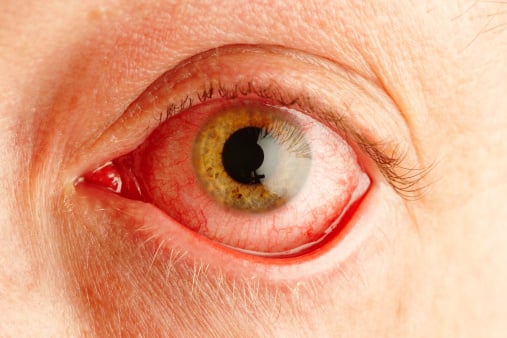Understanding the different causes & treatments of pink eye.
Summer activities and sports camps are a favorite past time for kids who are out of school for summer vacation. Whether your kids are heading off to basketball camp at your local college, an adventure camp up north in the woods, or your basic day camp at the local YMCA, summer camps can be a fun opportunity for kids to get away from home and embark on new, fun adventures.

When children come back home from these popular kid getaways, they often bring several new things home with them: stories of fun mishaps and escapades with new friends, crafts and souvenirs from their favorite activities, and sometimes a nice, friendly little pink present in their eye―pink eye.
This infectious eye illness, also known as conjunctivitis, is common during childhood, especially in situations where many kids are housed together in the same environment such as camps, sleepovers and summer day care.
However, despite the commonality of this illness, many people are not aware that there are actually several different types of pink eye. While all types of infective conjunctivitis typically lead to redness and inflammation of the membranes covering the whites of the eyes and the inner parts of the eyelids, these membranes are triggered by a wide range of environmental factors.
There are four different types of pink eye that are commonly caused by these outside factors:
Viral Pink Eye: This type of pink eye is the most common of the four and occurs after coming in contact with someone with the illness. You can identify it when the eyes are very red, but there is little to no drainage around the eye. If there is drainage, it is typically seen as crust around the eye when waking up. This type of virus infection typically affects both eyes and can bring about “cold-like” symptoms such as sinus congestion and a runny nose.
Bacterial Pink Eye: You can spot when pink eye is caused by outside bacteria when the eyes are red with yellow or green drainage oozing or crusting around the eyes. It may also lead to both eyes being swollen, redness around the eyelids, and discharge that causes the eyelids to stick together after a night of sleep.
Allergic Pink Eye: Allergic conjunctivitis occurs seasonally, especially during the springtime. This type of pink eye typically affects both eyes and can cause them to become red and itchy with little or no drainage. Frequent causes of allergic pink eye include seasonal pollens, animal dander, and dust.
Chemical Pink Eye: This particular kind of pink eye can occur when any kind of irritating substance, such as smoke, sprays, smog or household cleaners enter the eye. It is very important to thoroughly wash the eye with a large amount of water if these types of irritating substances get into the eye. If you don’t think the substance is safe, you should immediately contact your doctor or local poison-control center.
No matter what type of pink eye your child may fall victim to, the most common treatment that doctors often assign are prescription eye drops. It is important that you are careful not to use a medicated prescription that is old or prescribed to someone else as they can be inappropriate for your current infection. Always take medications as prescribed and be sure to follow the instructions provided by your doctor.
Understanding the different types of conjunctivitis symptoms commonly found in children can help your kids enjoy their summer camps and activities free from pink eye all season long.
Image source: Jupiter Images